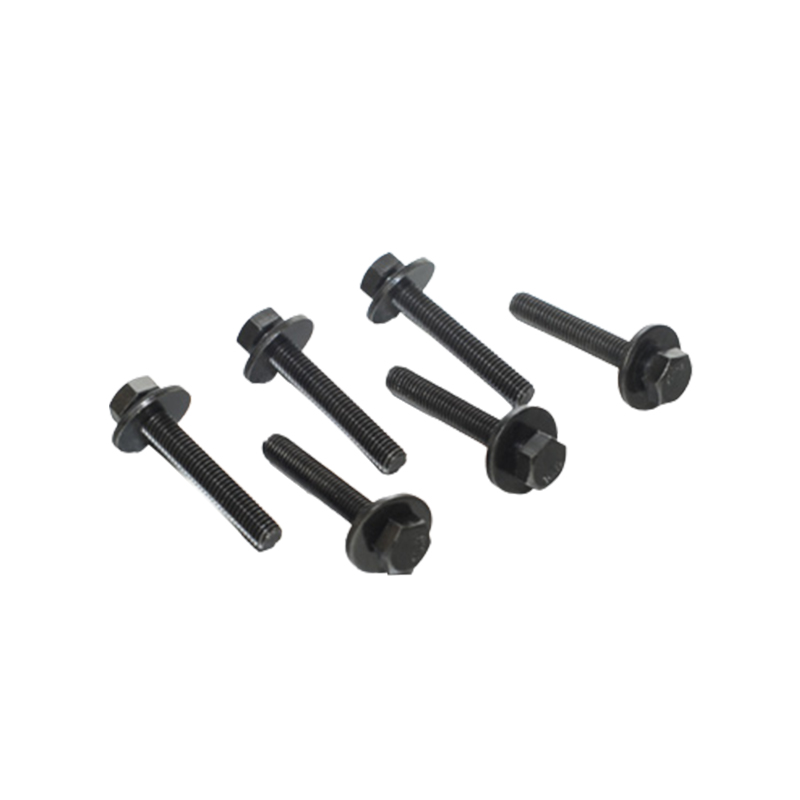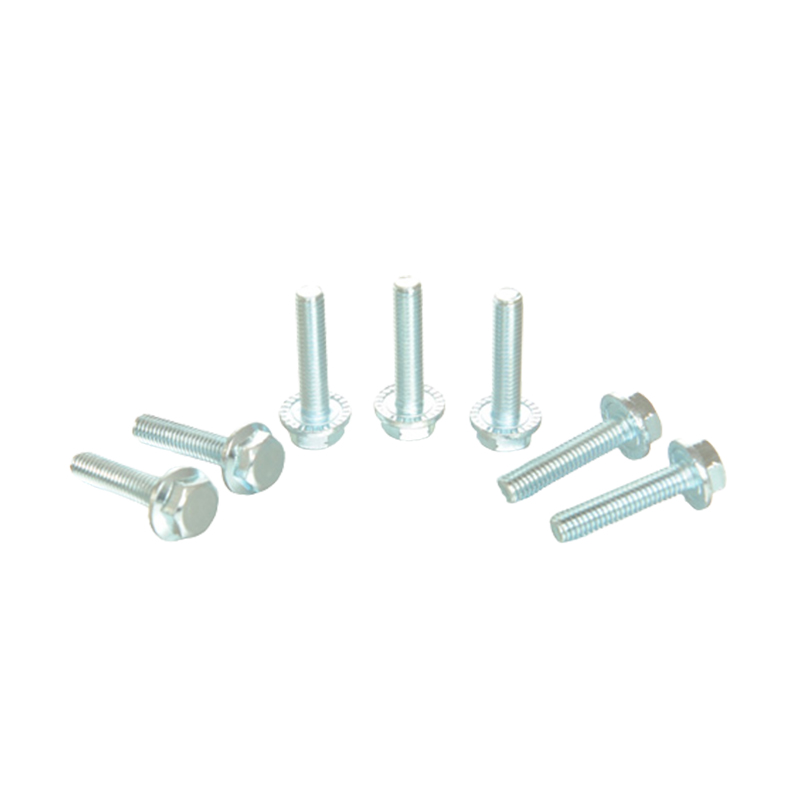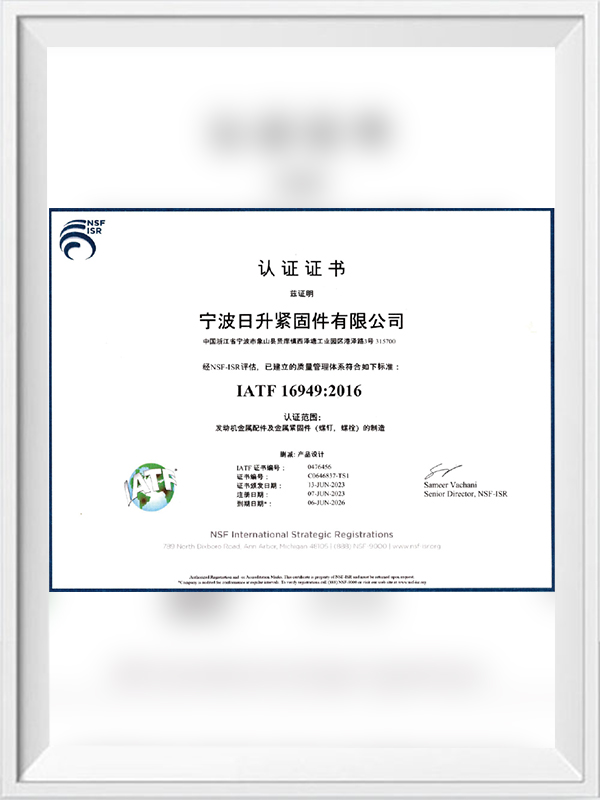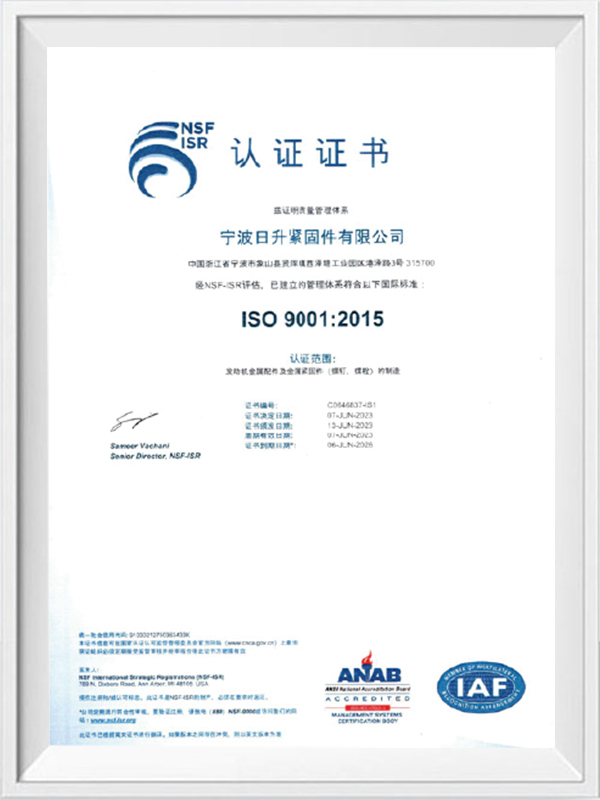1. Design and Construction Features of Hexagonal Gasket Screws
Hexagonal gasket screws are engineered to provide enhanced functionality and reliability compared to traditional fastening solutions. Their design incorporates several key features that contribute to their effectiveness in industrial applications:
a)Hexagonal Head: The screw head is hexagonally shaped, allowing for easy and secure tightening using a wrench or socket. This design not only facilitates efficient assembly but also ensures that the applied torque is evenly distributed, minimizing the risk of stripping or damaging the screw head.
b)Integrated Flange: Beneath the hexagonal head lies an integrated flange. This flange serves multiple purposes: Load Distribution: When the screw is tightened, the flange distributes the clamping load over a broader surface area. This helps prevent damage to the mating surface and ensures a secure joint. Sealing: The flange acts as a built-in washer, providing a seal against liquids and gases. This is particularly crucial in applications where maintaining a leak-free environment is essential, such as in automotive engines or hydraulic systems. Vibration Resistance: By distributing the load evenly, the flange reduces the likelihood of loosening due to vibrations or thermal cycling. This feature enhances the reliability of the joint over time, minimizing the need for maintenance and tightening.
c)Material Selection: Hexagonal gasket screws are manufactured from a variety of materials to suit different environmental and operational conditions. Common materials include: Stainless Steel: Ideal for applications requiring corrosion resistance and durability, such as marine environments or food processing equipment. Carbon Steel: Known for its strength and cost-effectiveness, suitable for general-purpose industrial applications. Alloy Steel: Offers enhanced mechanical properties and is often used in high-stress applications where strength and toughness are critical.
d)Thread Design: The threading of hexagonal gasket screws is designed to ensure secure engagement with the mating threads, providing a strong and reliable connection. Thread pitch and depth are carefully engineered to optimize holding power while accommodating different assembly requirements.
e)Surface Coatings: To further enhance performance, hexagonal gasket screws may feature surface coatings such as zinc plating or other corrosion-resistant treatments. These coatings protect the screws from environmental factors, extending their service life and maintaining their structural integrity under challenging conditions.
2. Advantages of Hexagonal Gasket Screws Over Conventional Screws
Hexagonal gasket screws represent a significant advancement in fastening technology, offering several distinct advantages over conventional screws in industrial applications:
a)Integrated Flange Design: Unlike conventional screws that require separate washers for load distribution and sealing, hexagonal gasket screws feature an integrated flange beneath the head. This design not only simplifies assembly by eliminating the need for additional components but also enhances efficiency and reduces assembly time. By providing a built-in sealing surface, the flange ensures a tight and reliable seal against liquids and gases, crucial for applications where leakage prevention is critical.
b)Enhanced Sealing Performance: The integrated flange of hexagonal gasket screws improves sealing performance compared to conventional screws. By creating a more uniform and consistent sealing surface, these screws minimize the risk of leaks over time. This feature is particularly beneficial in industries such as automotive, aerospace, and manufacturing, where maintaining a leak-free environment is essential for operational safety and efficiency.
c)Vibration Resistance: Hexagonal gasket screws are designed to resist loosening caused by vibrations or thermal cycling. The integrated flange distributes the clamping load more evenly over the joint, reducing the likelihood of joint failure due to dynamic forces. This attribute enhances reliability and reduces the need for frequent maintenance and re-tightening, thereby lowering overall operational costs.
d)Improved Load Distribution: The flange beneath the head of hexagonal gasket screws serves as a washer, distributing the applied load over a larger area of the mating surface. This feature helps prevent surface damage and deformation, prolonging the life of both the screw and the components it secures. Conventional screws without integrated washers may concentrate stress in localized areas, increasing the risk of joint failure under heavy loads or dynamic conditions.
e)Simplified Assembly and Maintenance: By integrating sealing and load distribution functions into a single component, hexagonal gasket screws streamline assembly processes. This simplification reduces the complexity of inventory management and assembly line operations, leading to improved production efficiency and reduced labor costs. Maintenance tasks are simplified as the integrated design minimizes the risk of assembly errors and facilitates quicker disassembly and reassembly when necessary.
















